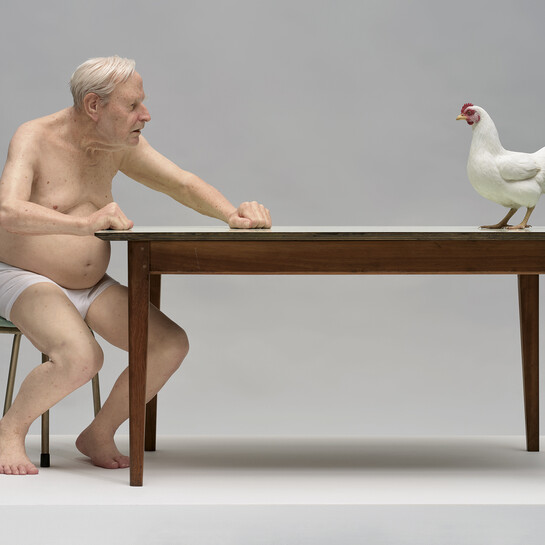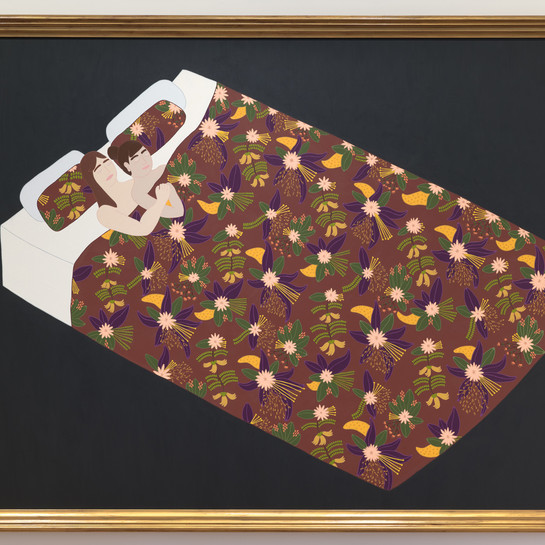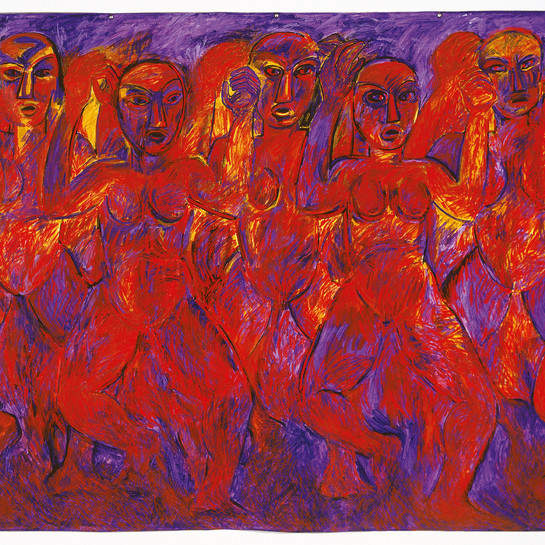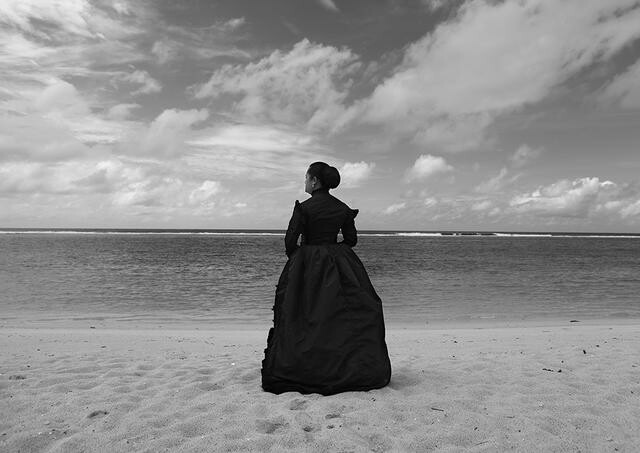Yuki Kihara
Samoa /
Aotearoa New Zealand, b.1975
Sāmoan,
Pasifika,
Japanese
After Tsunami Galu Afi, Lalomanu (2013)
- 2013
- C-type print
- Purchased 2017
- 843 x 1088mm
- 2017/063
- View on google maps
Location: Touring Gallery A
Tags: beaches, black (color), clouds, dresses (garments), monochrome, people (agents), sand, seas, women (female humans)
Yuki Kihara took her alter ego Salome from an 1886 photograph titled Samoan half caste by New Zealand colonial photographer Thomas Andrew. Clad in Victorian ourning black, Salome’s unforgettable spectral presence is informed by Kihara’s own xperiences as a Sāmoan-Japanese person who is also Fa‘afafine, a term used in Indigenous āmoan society to describe someone who lives ‘in the manner of a woman’. Free from binary narratives, Salome occupies the Vā, a realm separated from time and space, in order to critique and reframe the impacts of colonisation. Roman Catholic Church, Apia and After Tsunami Galu Afi, Lalomanu were made in Sāmoa following the devastation of Cyclone Evan. With her back to us, Salome pulls our gaze to the ruined church and out to the open sea. Bearing witness to this recent tragedy, and Sāmoa’s history of loss through colonisation, she looks to the future. In Conveyance of Time (on the wall to your left), Salome is not one, but many. In flowing black crinoline, she moves through history and place like a queen on a chess board. In her arms are objects gathered from across time – an ava bowl, bible, navigational chart, the moon and Jupiter – carried as guides for the days to come.
(Dummies & Doppelgängers, 2 November 2024 – 23 March 2025)
Exhibition History
Te Wheke: Pathways Across Oceania, 30 May 2020 – 3 July 2022
Dressed in Victorian black, Salome laments the impact of colonial histories on Samoan life and culture. A persona developed by Yuki Kihara, she is like a spectre or apparition, created in response to past events.These works are part of a series in which Salome pays witness to Samoa in the aftermath of 2012’s Cyclone Evan. In each work, Salome is positioned with her back or profile to the viewer, guiding our gaze towards landscape, environment, monuments and architecture – opening a space for us to enter. We are Salome’s guests, but she controls our gaze. We are not witness to people in states of shock or trauma, nor are we invited to view panoramas of devastation. Instead she performs in a quiet way, slowing things down and letting the juxtaposition between the dress, the landscape and architecture fill each image with a complex range of senses, ideas and emotions.




